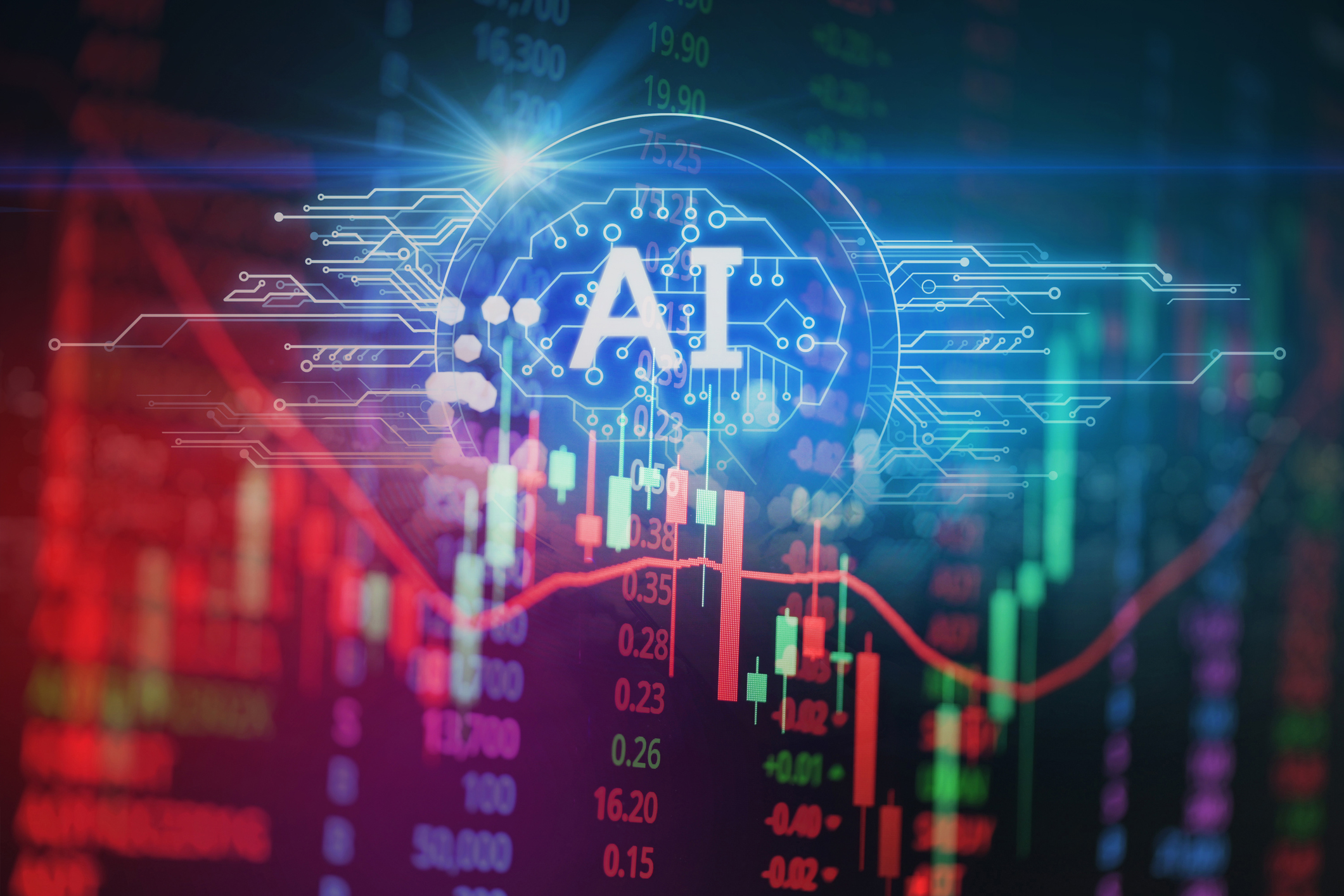Higher Commodity Prices Warn of Inflation
But conditions aren’t ripe for a rise in consumer prices until the economy’s growth accelerates, not likely until 2012.

Commodity prices are rising all over, from copper to cotton and gasoline to gold. It’s a red flag…a warning that inflation may be in the works further down the road. Last year the CPI rose by 1.5%, with a large jump in December of 0.5% over the previous month. The increase came largely from energy and food. Some categories showed declines, including apparel, footwear, new cars, televisions and computers.
The threat of higher inflation is not imminent, though. Rising commodity prices aren’t flowing through the pipeline to households. The Consumer Price Index will likely increase by only about 2% this year, measuring from Dec. 2010 to Dec. 2011.
For now, the necessary preconditions aren’t there. Missing is a critical ingredient needed for a worrisome upward price spiral: Accelerating growth that absorbs capacity--manpower, equipment and buildings--that is now idle. At 9.4%, unemployment remains high. And capacity use stands at just 76%. Typically, price pressure doesn’t begin until capacity use hits about 84%. As Diane Swonk, chief economist with Mesirow Financial, notes, “Capacity remains in excess, wage gains remain contained and rising prices are being muted by productivity growth.”
From just $107.88 $24.99 for Kiplinger Personal Finance
Become a smarter, better informed investor. Subscribe from just $107.88 $24.99, plus get up to 4 Special Issues

Sign up for Kiplinger’s Free Newsletters
Profit and prosper with the best of expert advice on investing, taxes, retirement, personal finance and more - straight to your e-mail.
Profit and prosper with the best of expert advice - straight to your e-mail.
Only when there’s more expansion can businesses raise prices and workers demand higher wages and salaries. There is no single magic number to watch out for. Stuart Hoffman, chief economist with PNC Financial, says, “I would get concerned if the unemployment rate falls to 8%, capacity use rises to 80% and Federal Reserve policy is still accommodative.” We’re nowhere near there yet…with growth in 2011 expected to climb only modestly, to 3.5%, and with more than 7 million laid-off workers still unemployed.
Come 2012, that’s likely to change. When GDP hits a 4% growth rate and monthly job gains expand above the 200,000 mark, the Federal Reserve will start to warn that inflation risks are rising and an interest rate hike is imminent. By mid-2011, the central bank will abandon its easy credit policy, which has been pumping billions of dollars into the money supply to help stimulate job-creating growth. Meanwhile, firms will try to raise prices--mostly unsuccessfully. Instead, they’ll have to swallow the higher cost of raw materials and try to boost productivity.
Crude oil prices will remain elevated, but below $100 a barrel. OPEC nations have plenty of spare capacity and their goal is to keep the price between $85 and $95 a barrel. Gasoline prices have further to rise. The jump at the pump hasn’t yet caught up with the increase in oil prices. Plus the advent of warm weather will bring a hike in demand, pushing the national average to about $3.50 a gallon.
Expect more gains for industrial metals prices, too, but at a slower pace than last year, when copper soared about 30% to a record high and stainless steel rose 20%. Figure that copper prices will rise another 10%, steel about 5%, and the same for aluminum.
Other commodities posting higher prices include coal and beef…driven up in the first case by power plants soon to be built in China and India, and in the second, by shorter supplies. Prices of grains are strong…especially for bread-type wheat. Cotton prices, already at record levels, mean shoppers will pay more for apparel.
Consumers will notice higher rents, and increased utility bills. Both will nudge up the cost of housing, which accounts for 42% of the CPI. Also increasing: Food. Medical costs. Tuition. And phone and cable TV fees. Nearly everything else…steady or dropping: computers and other high-tech hardware, TVs, new cars and shoes. So modest inflation…for now.
Profit and prosper with the best of Kiplinger's advice on investing, taxes, retirement, personal finance and much more. Delivered daily. Enter your email in the box and click Sign Me Up.

-
 The 'Best of Both Worlds' Rule of Retirement Spending
The 'Best of Both Worlds' Rule of Retirement SpendingIt's the 4% rule on steroids. Here's what it is and why it may work for you.
-
 Don't Let the Court Decide: Test Your Knowledge on Avoiding Probate
Don't Let the Court Decide: Test Your Knowledge on Avoiding ProbateQuiz Test your basic understanding of why having a estate plan is crucial to avoiding probate in our quick quiz.
-
 Your Year-End Tax and Estate Planning Review Just Got Urgent
Your Year-End Tax and Estate Planning Review Just Got UrgentChanging tax rules and falling interest rates mean financial planning is more important than ever as 2025 ends. There's still time to make these five key moves.
-
 AI Appliances Aren’t Exciting Buyers…Yet
AI Appliances Aren’t Exciting Buyers…YetThe Kiplinger Letter Artificial intelligence is being embedded into all sorts of appliances. Now sellers need to get customers to care about AI-powered laundry.
-
 What to Expect from the Global Economy in 2026
What to Expect from the Global Economy in 2026The Kiplinger Letter Economic growth across the globe will be highly uneven, with some major economies accelerating while others hit the brakes.
-
 The AI Boom Will Lift IT Spending Next Year
The AI Boom Will Lift IT Spending Next YearThe Kiplinger Letter 2026 will be one of strongest years for the IT industry since the PC boom and early days of the Web in the mid-1990s.
-
 Amid Mounting Uncertainty: Five Forecasts About AI
Amid Mounting Uncertainty: Five Forecasts About AIThe Kiplinger Letter With the risk of overspending on AI data centers hotly debated, here are some forecasts about AI that we can make with some confidence.
-
 Worried About an AI Bubble? Here’s What You Need to Know
Worried About an AI Bubble? Here’s What You Need to KnowThe Kiplinger Letter Though AI is a transformative technology, it’s worth paying attention to the rising economic and financial risks. Here’s some guidance to navigate AI’s future.
-
 Will AI Videos Disrupt Social Media?
Will AI Videos Disrupt Social Media?The Kiplinger Letter With the introduction of OpenAI’s new AI social media app, Sora, the internet is about to be flooded with startling AI-generated videos.
-
 What Services Are Open During the Government Shutdown?
What Services Are Open During the Government Shutdown?The Kiplinger Letter As the shutdown drags on, many basic federal services will increasingly be affected.
-
 The Economy on a Knife's Edge
The Economy on a Knife's EdgeThe Letter GDP is growing, but employers have all but stopped hiring as they watch how the trade war plays out.